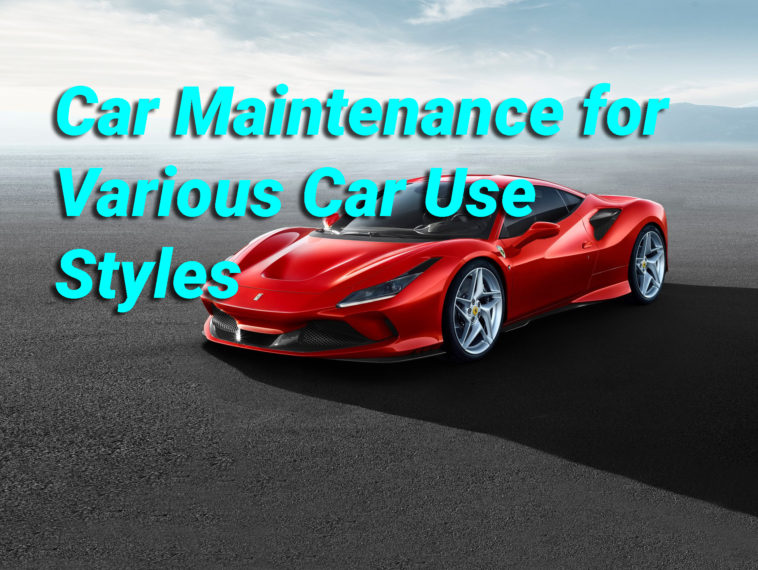Our cars are a part of the family. We take care of it; it takes us places; the relationship is very close to heart. However, do you really know how to take care of your car depending on its usage? Are you doing the generic oil changes and tire pressure checks every now and then, and leave everything else to chance?
Buckle up and we’ll explore car maintenance tips for different types of car usage styles.
Daily-Use Maintenance Tips for Your Car
Driving includes several systems and a whole lot of components that must be maintained periodically and of course, it is preferable to know them for the following benefits.
As with many people who use your car for commuting or work, let this be for you. Regularly providing the services methods here mentioned can help save your car and also keep you away from having your car break down on the road because of a mechanical issue.
1. keep your car in a garage or parking lot while not using it.
Ensure that your car is safe from elements like sunshine or rain for extended periods of time. The best way to keep your car healthy is to park it in proper places while not using it. If you do not have access to a parking lot at work, then look for a spot with shadows or under a tree. Extended periods under the sun can heat up the insides and mess with the interior mechanics.
2. Regular checks and service practices.
Many cars that do not receive regular services usually tend to get problems and breakdown. Paramount are your brake lights, turn lights, wipers, etc. inform your conscious mind that they still work the way they should to appreciate the simple life can be. Encourage your students to check the air pressure in the tires and the engine oil and coolant status. Should any of these drink less than ones would immediately make a pretext for taking a new run to the store.
3. When using daily, it’s common for the battery to run out quicker than you expect. So, see if you need to change them at least every 3 or 4 months. It only takes a few minutes but will save you much more in terms of unexpected surprises on the road.
Maintenance Tips For Cars Before a Long Trip

When you are hitting the road for a longer period, it makes sense to fix the problems and take care of things before you start rather than finding out you have issues unresolved and getting stranded on the roadside in an unknown location. So besides checking the ones we mentioned above, do takes these points into consideration whenever you are planning a long road trip in your car.
1. Breaks, clutch pedals, and transmission.
You don’t want to start your trip without knowing the condition of the innards of your car. It can make the trip arduous and miserable. So, during planning, get an expert to look at the health and condition of the essential mechanical components in your car.
2. Wiring and suspension.
These require a separate section from the previous ones because they may not necessarily get you stranded but can affect the comfort level of your trip. In case the AC is not working, or you are feeling every little bump in the road with your body, the trip will quickly turn sour, and you will not be able to enjoy the road.
3. Insurance and security.
When you are using the car between your home and office every day, you have the luxury of taking a day or two to take care of things. But when on the road, you’re stuck till you fix it. So, ensure your car has insurance before taking off, and consider installing a GPS tracker in your car for security, which you can use to monitor the precise location all the time. This would come in handy if your car ever got stolen or if you are lost on an unknown road and need to share coordinates with someone else to get help.
How To Maintain and Store Cars For a Long Period
Do you have a car but don’t plan to use it for a while? Are you leaving your car stored away in your garage for extended periods of time? Then be sure to check out these points to keep it healthy and away from depreciation due to inactivity.
1. Keep your tanks filled, just not to the brim.
It’s only common to think that you are storing your car, so you don’t have to fill any gas in it. That cannot be more wrong. Empty tanks can accumulate rust and can seriously affect the health of the car when kept idle for the long term. So, keep the tanks filled for about 75% before storing them.
2. Change oil before and after storing
If you are getting the car into the garage after driving it for a while, oil can damage the engine components. So, change the oil to make sure it’s clean before you store away your car, and change it again when you take it out for a spin after a while. However, if you haven’t stored it for more than a month or so, you don’t have to change the oil while taking it out. Only if you do so for a period of months, this is applicable.
3. Wrap the wiper blades and plug the exhaust pipe.
When allowed to stay idle, wiper blades can get stuck and leave marks on the windshield. So, wrap them in foil or place a sponge between the blades and the windshield to avoid that. Similarly, when stored away for long periods of time, rodents or spiders can crawl up the exhaust pipe and make a nest. Covering it with a piece of cloth or a piece of cardboard can do the trick.
4. It’s recommended to elevate the car when stored away.
Being on the same spot for a long time can put pressure on the same area of the tires and can cause flat spots. So, if you are sure that you will not be taking it out, consider placing the car on a platform and taking the pressure off the tires.
5. Yes to car cover and no to parking brakes.
Car covers can help you with dust accumulation. It can also protect the paint and exterior from the elements. Likewise, leaving the parking brakes on can cause mechanical pressure on the braking systems and it may lead to screeching noises and brake failures.
6. Protection with GPS Trackers.
If you have a well-protected garage, then it’s mostly ok, but no home or garage is totally burglar-proof. Especially if your car is left to itself for the long term, consider installing a GPS Tracker and creating a Geo-Fence around it so you will know exactly when it starts moving. This means you don’t have to monitor the car all the time, but you also get instant alerts and notifications whenever something happens.



